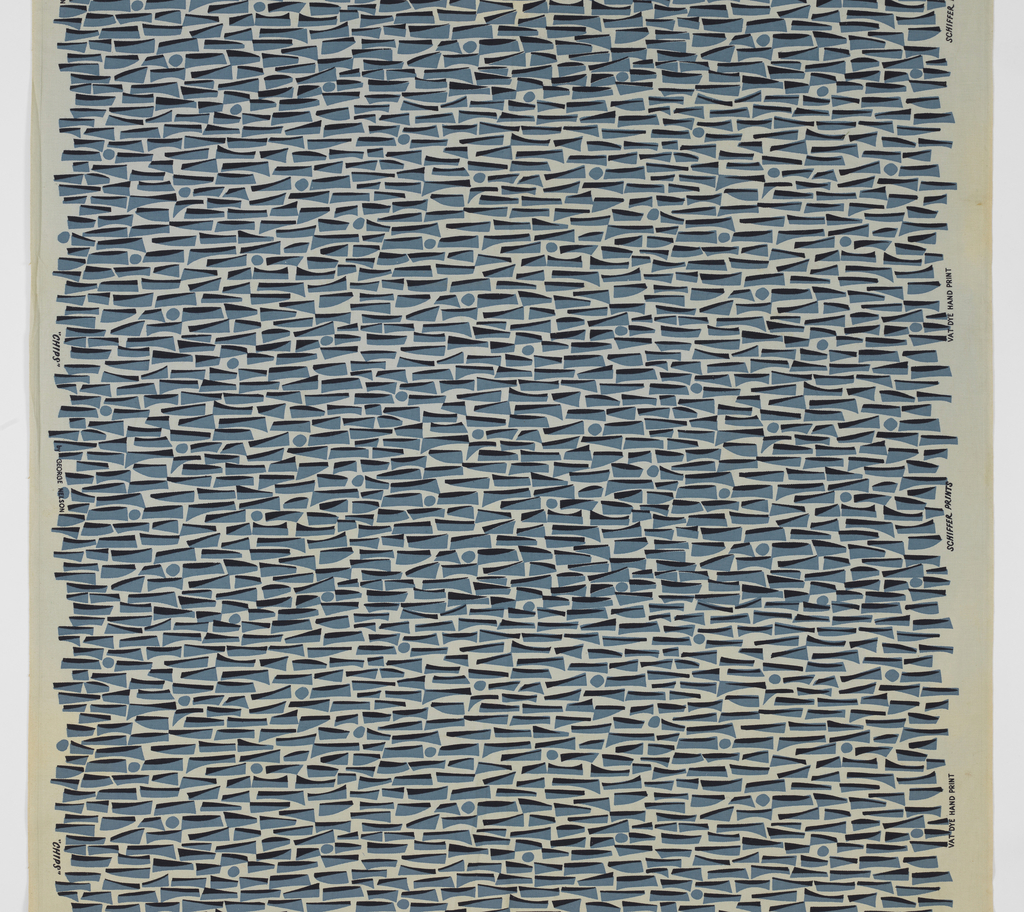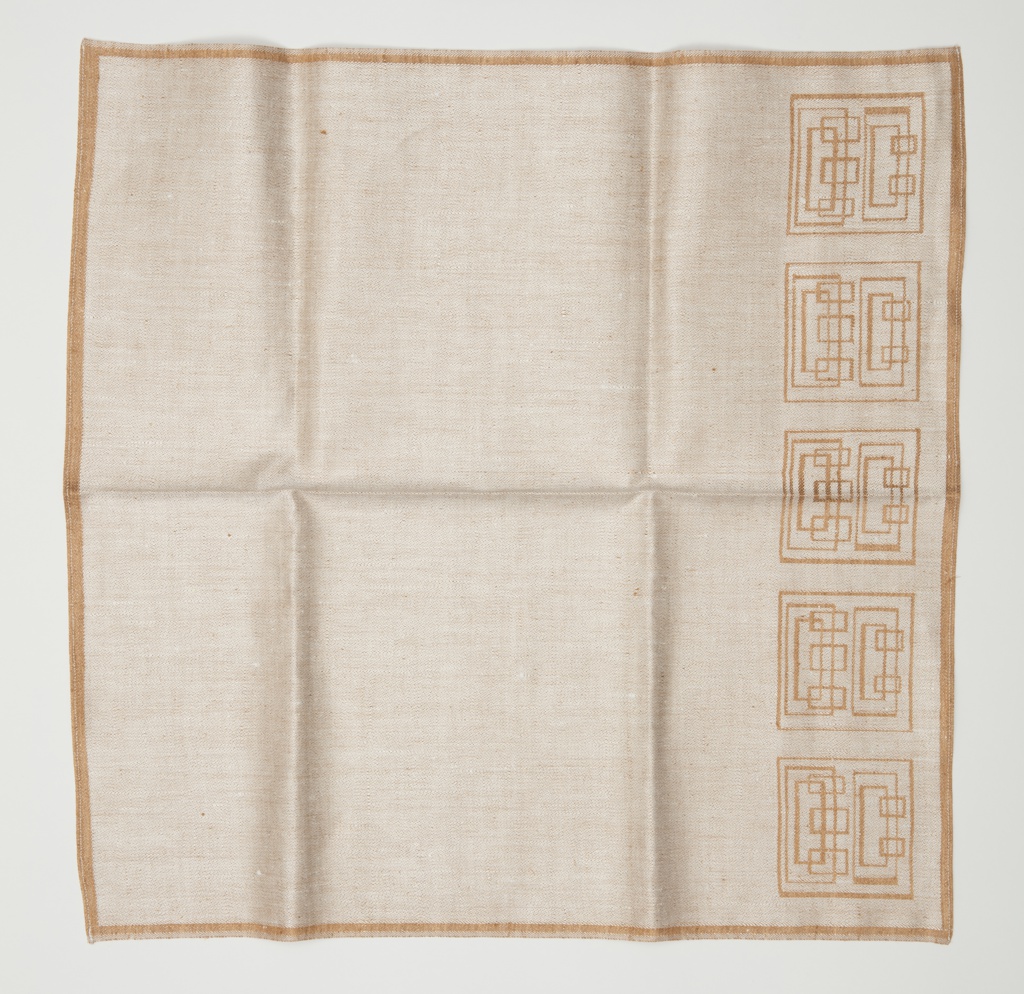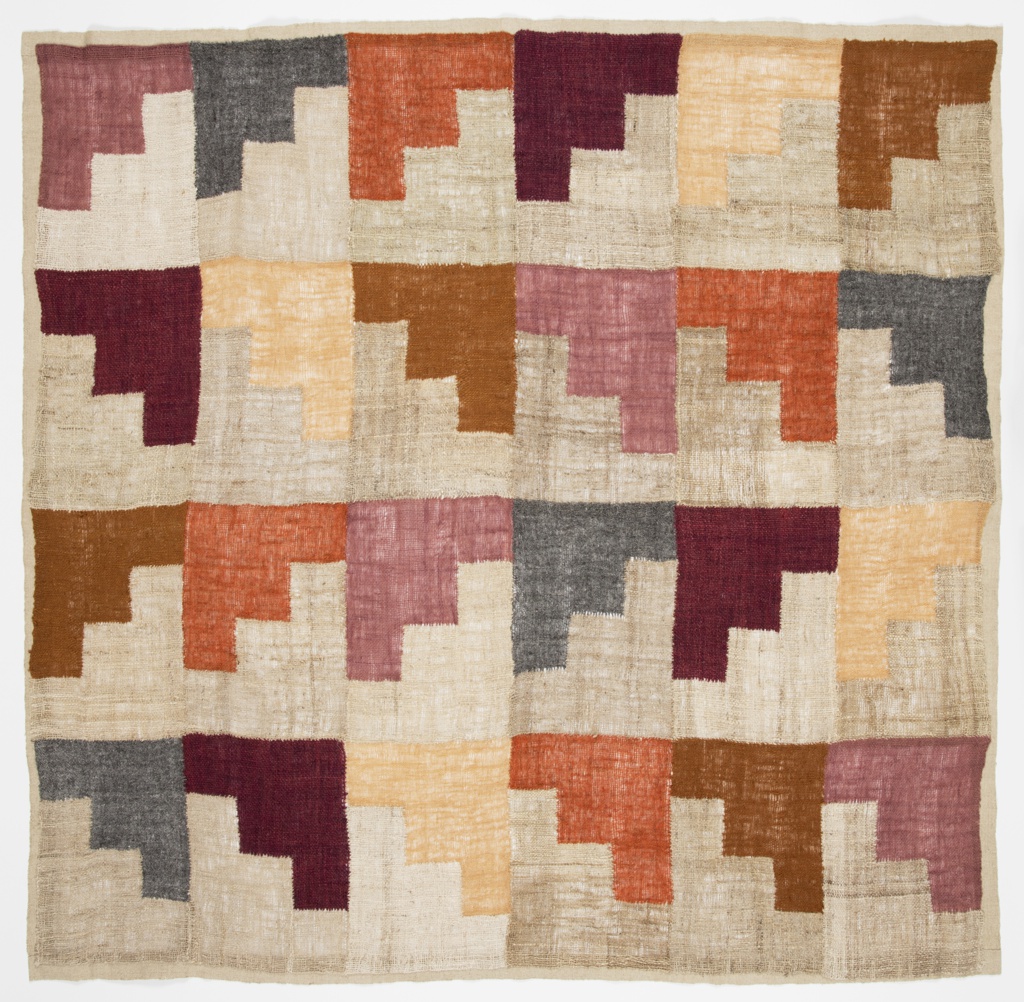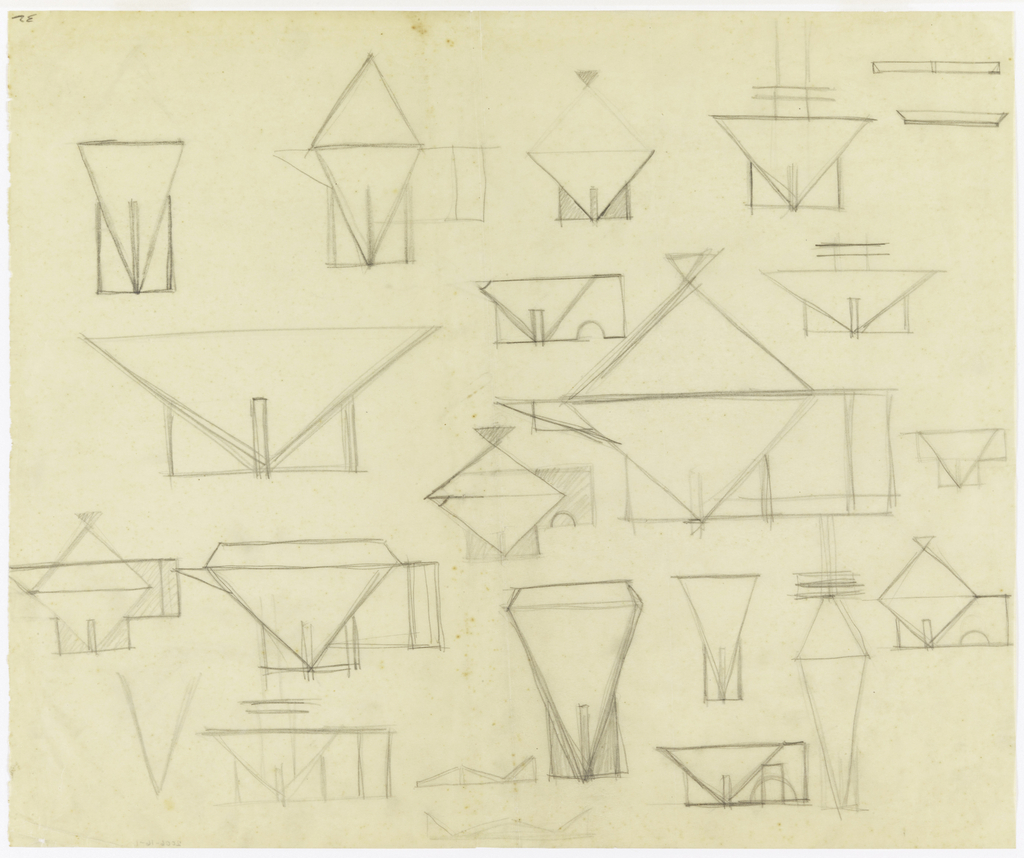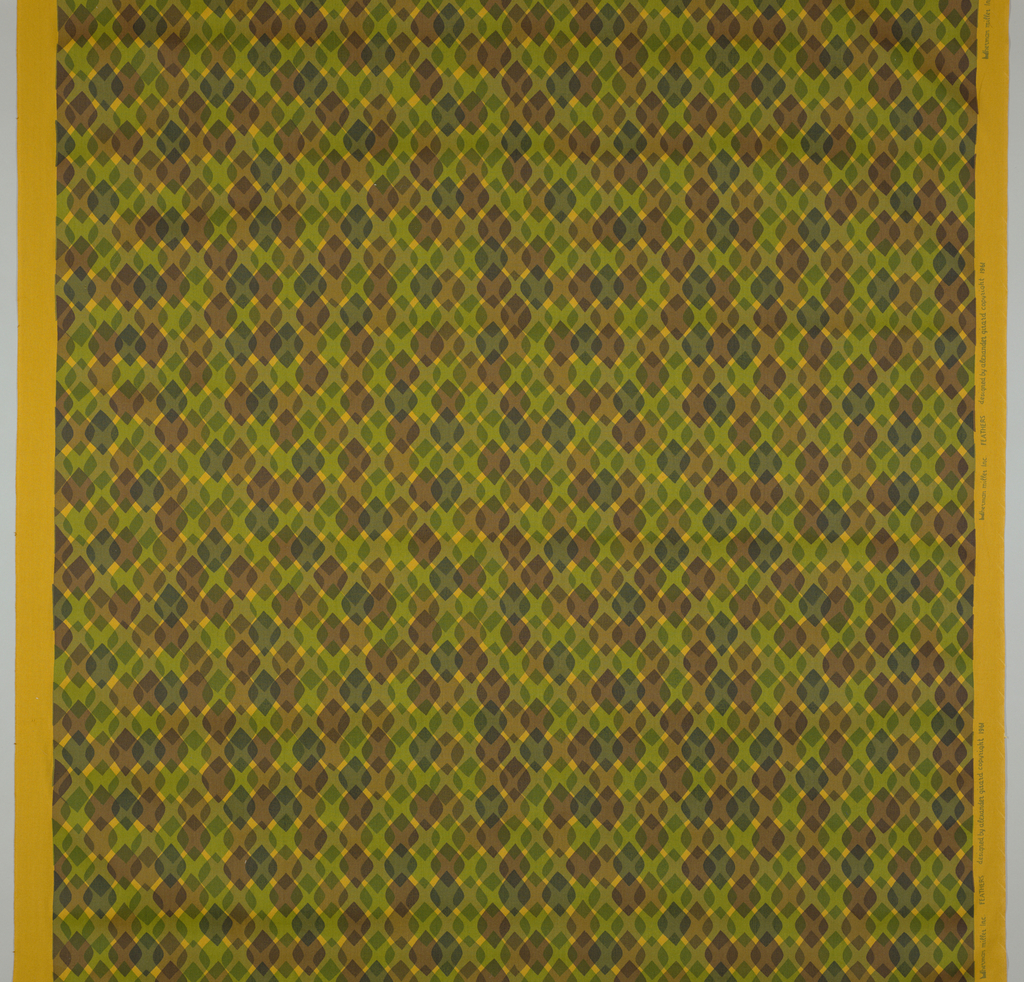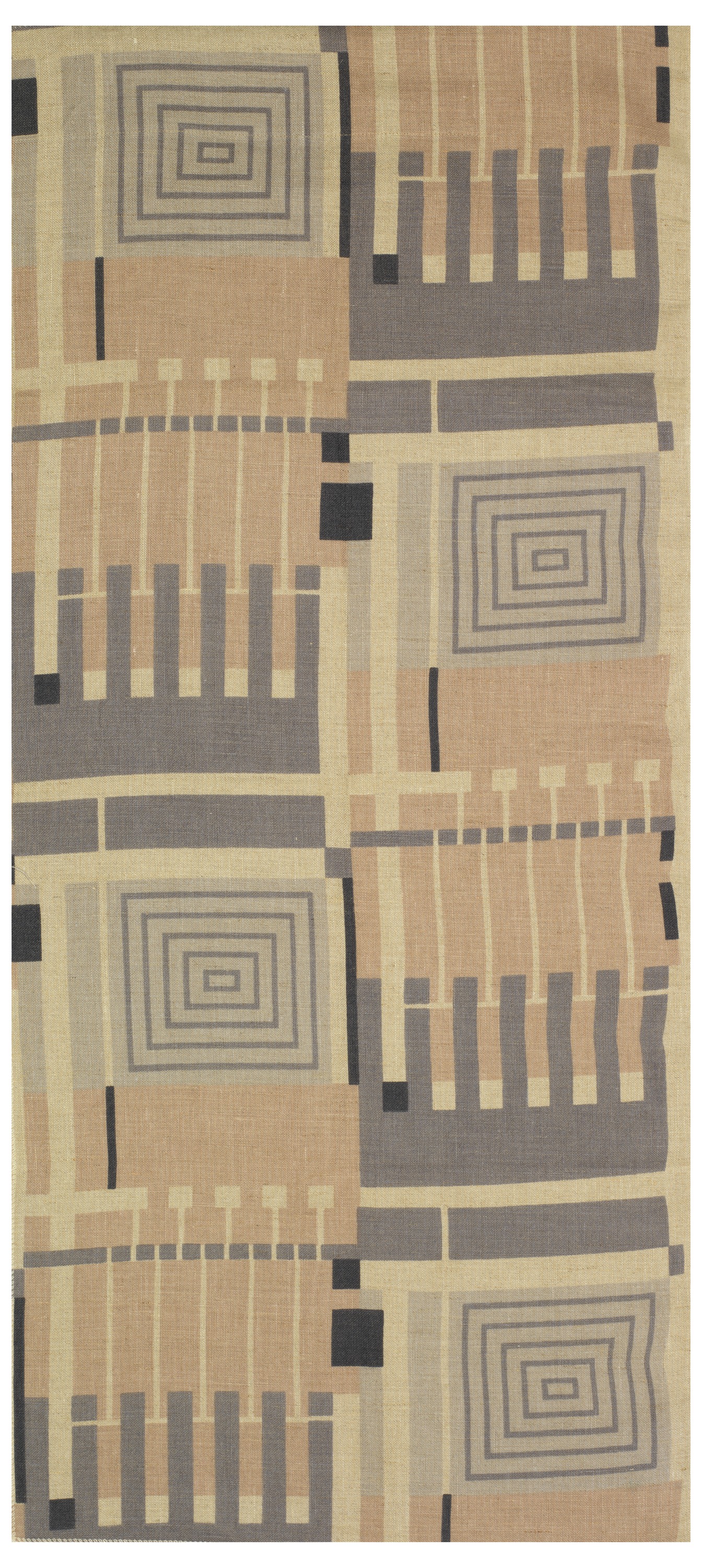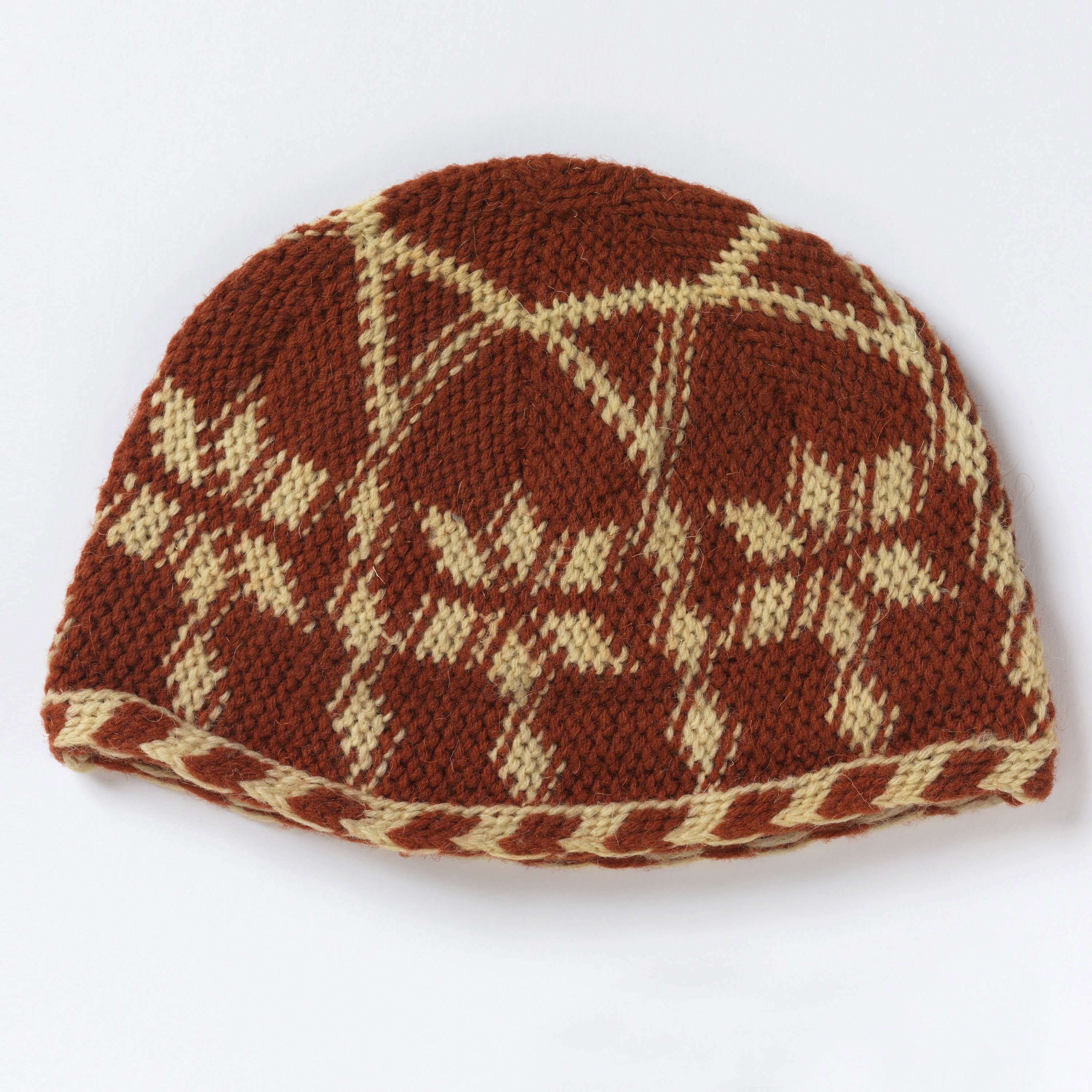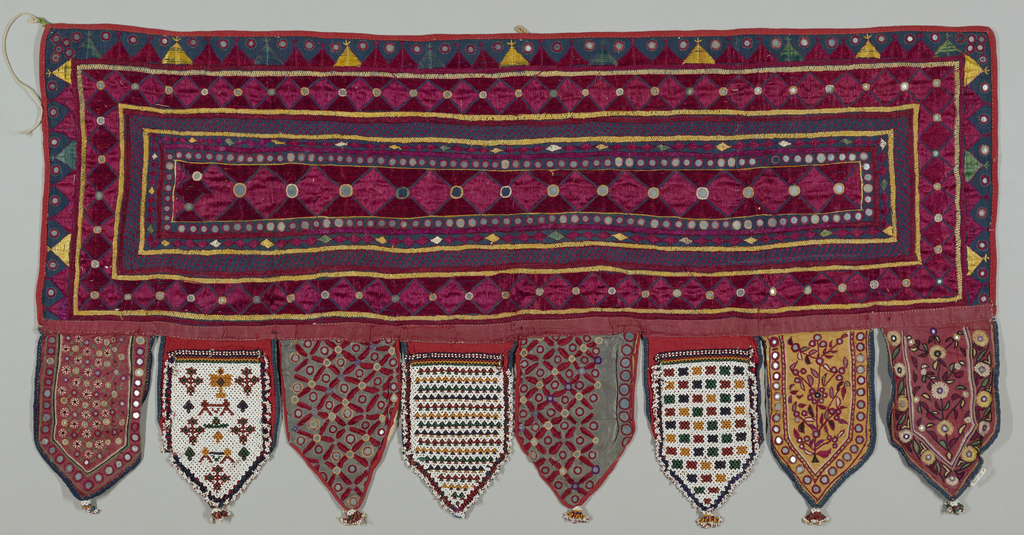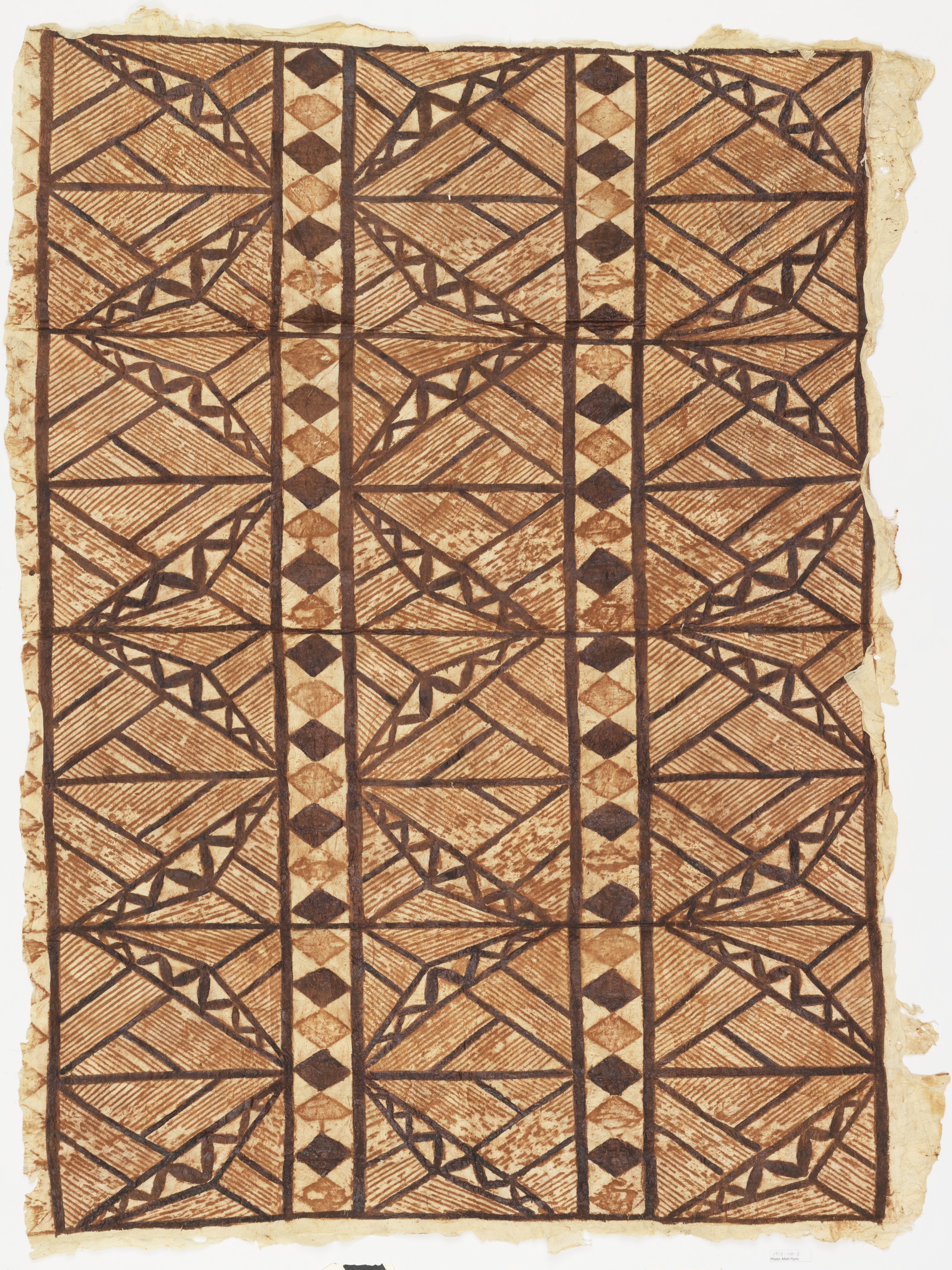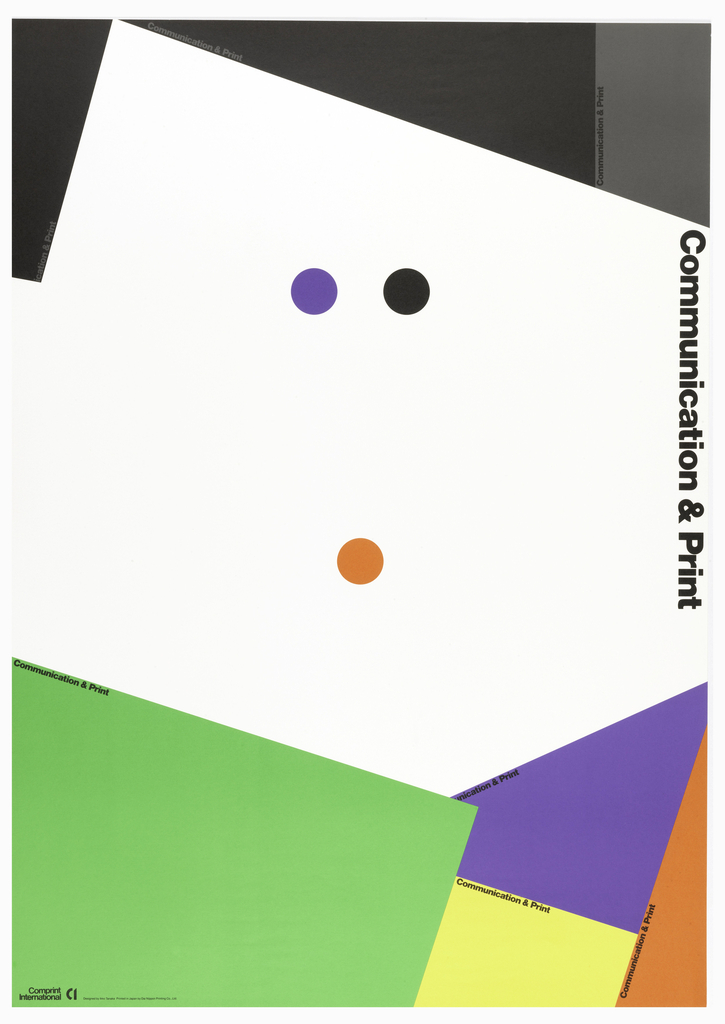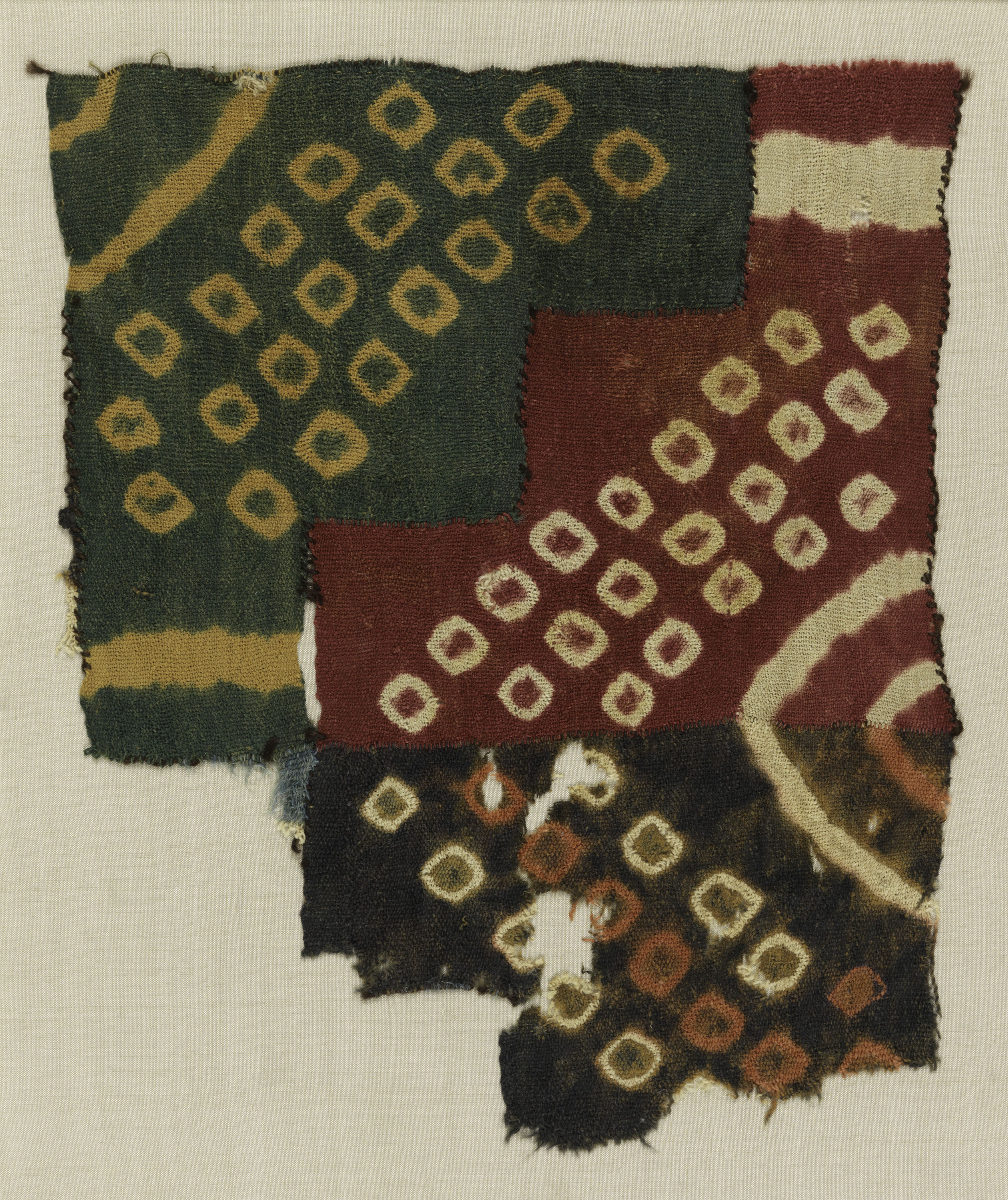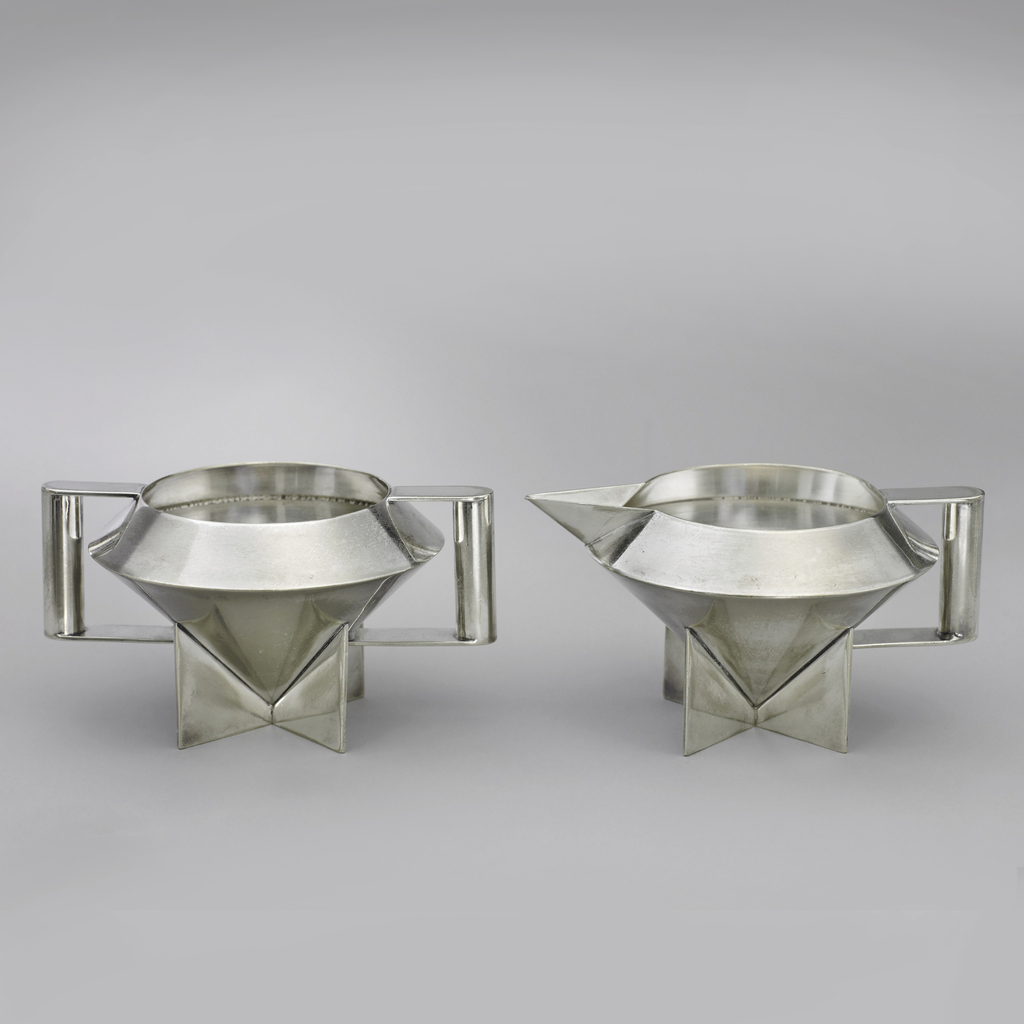In the aftermath of World War II, a number of textile producers attempted to revitalize the industry by enlisting recognized personalities in art and architecture to design screen prints. “Perhaps the most outstanding name collection is Stimulus Fabrics produced by Schiffer Prints,” Alvin Lustig wrote in American Fabrics Magazine in 1951. “There was not a...
The name Dora Jung (Finnish, 1906-1980) is closely associated with damask weaving, a technique in which the shiny face of satin weave and its matte reverse are manipulated to create subtle patterns. Over the course of her long career, Jung developed a variety of new techniques in damask patterning though her experiments in hand-weaving wall...
Paired sets of stepped blocks in harmony and balance echo an ancient process. James Bassler (American, b. 1933), in his work Six by Four II, incorporates an aesthetic of pure color through the interlacing of warps and wefts in a special way. By changing the colors of each block, linked one to the other, thread...
Gail Davidson discusses modernist designer Ilonka Karasz's geometric iterations for tableware.
Alexander Girard was the head of the Textile Division of Herman Miller Inc. from 1952 to 1973. During this time, he created over three hundred designs for textiles coordinated for use as upholstery fabrics and draperies for private and commercial interiors, exhibitions and corporate identity programs. His exuberant use of color, texture and pattern drew...
Although most of his home furnishings were designed for specific interiors, Frank Lloyd Wright created several lines of products for the market, among them the Taliesin Line of wall coverings and textiles, produced in partnership with F. Schumacher and Company. The collection included wallpaper, woven fabric, and printed fabric such as this, and many of...
This wool cap, probably intended for a man, was made in the first half of the 20th century by the indigenous inhabitants of Morocco, the Amazigh people (also called the Berbers), who make up 40-60 percent of the population and have a language and culture distinct from Arabs. Amazigh textiles were mainly produced by women,...
The toran is a frieze hanging named after a sacred gateway in Hindu, Jain, and Buddhist architecture. In the Gujarati communities of western India, a toran is hung above the doorway to the main room of the house as a sign of welcoming. This particular toran appears to be in the Kathipa style, recognizable by...
Tapa, a general term used to describe Polynesian bark cloth, is made from the inner bark of the Broussonetia tree that has been hand beaten, scraped, pressed, and patterned to create printed cloth. In Samoa, two methods are used to produce large pieces of printed bark cloth. One method consists of pasting smaller strips of...
The Japanese graphic designer Ikko Tanaka is recognized as a pioneer of modern Japanese graphic design. He merged western modernist aesthetics and Japanese tradition to generate a new visual expression for contemporary audiences. Tanaka’s frequent use of geometric forms and a limited color palette is clear evidence of his strong respect for the Bauhaus, the...
The wild and syncopated play of color and pattern in this tie-dyed textile from ancient Peru seems to counter the meticulous and steadied hand of the Andean weaver. The fabric was in fact specially woven in discreet, stepped-shaped units that were cut apart and re-assembled after being tie-dyed, mixing up the variously dyed sections. Several...
Who knew geometry could be so beautiful? This 1928 sugar bowl and creamer set epitomizes American modern design; yet, it is clearly influenced by the modern turn of European design from the same period, as evidenced by the Exposition internationale des Arts décoratifs et industriels modernes in Paris, 1925, as well as by Walter Gropius’...
